Books
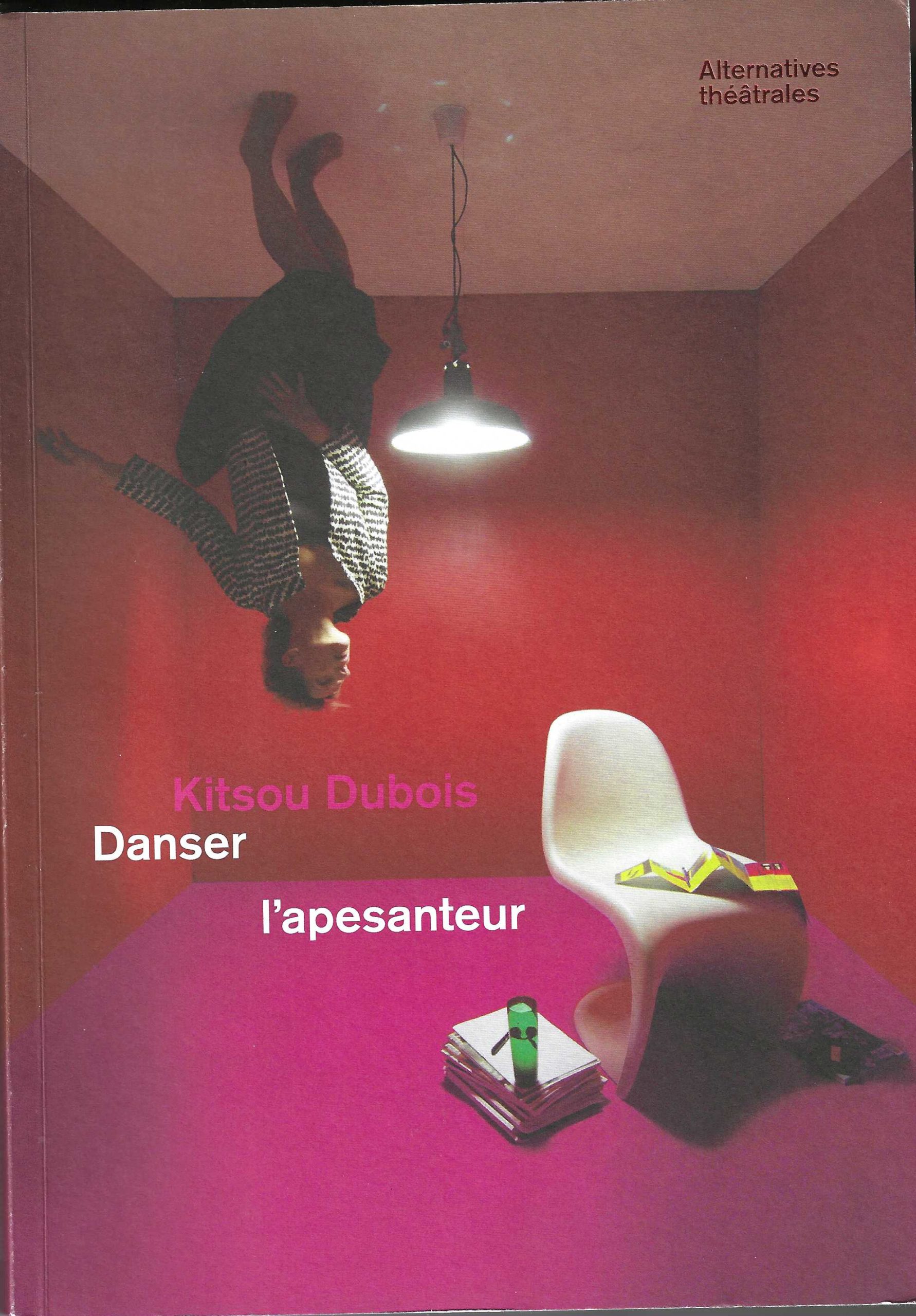
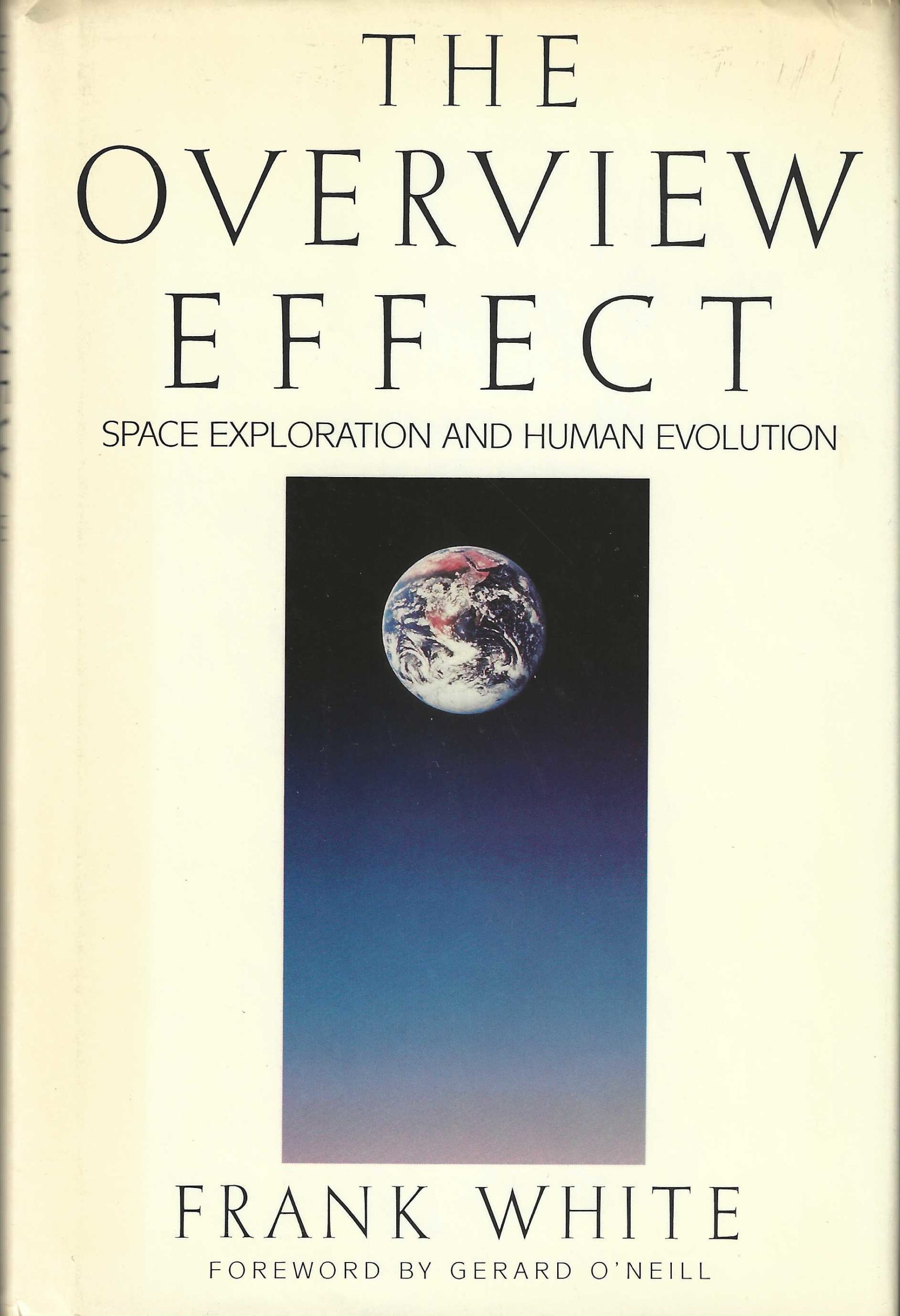
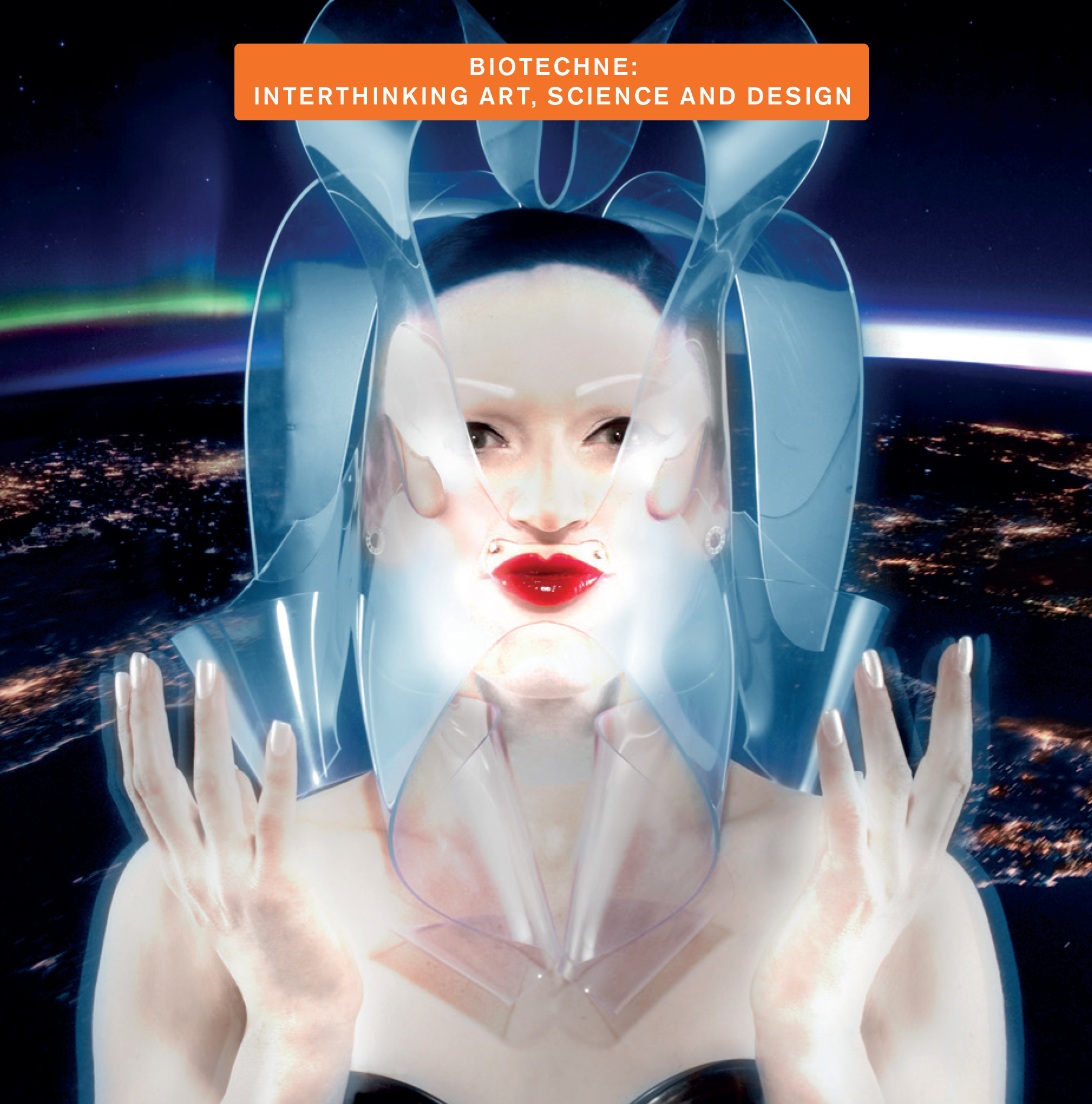
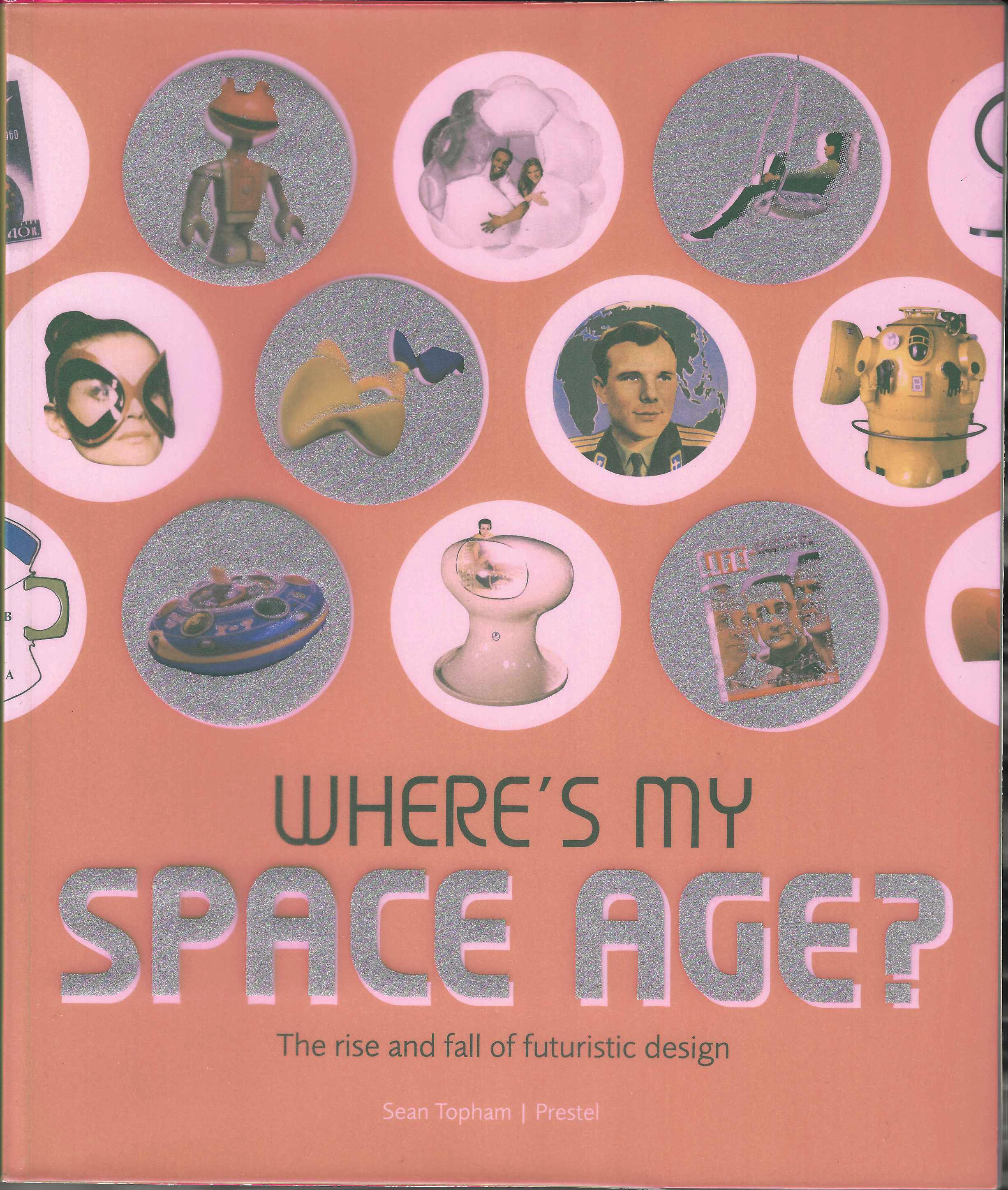
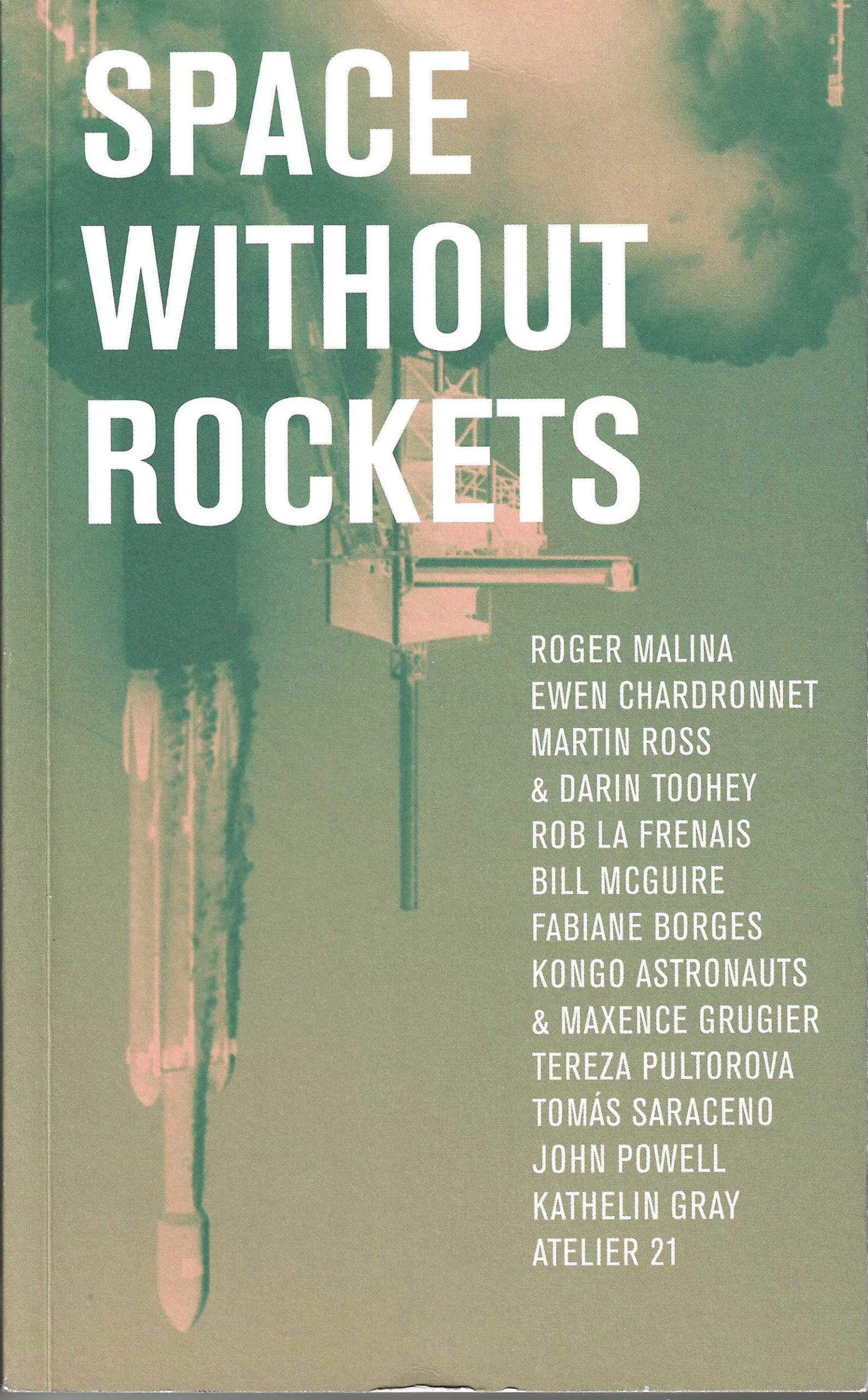
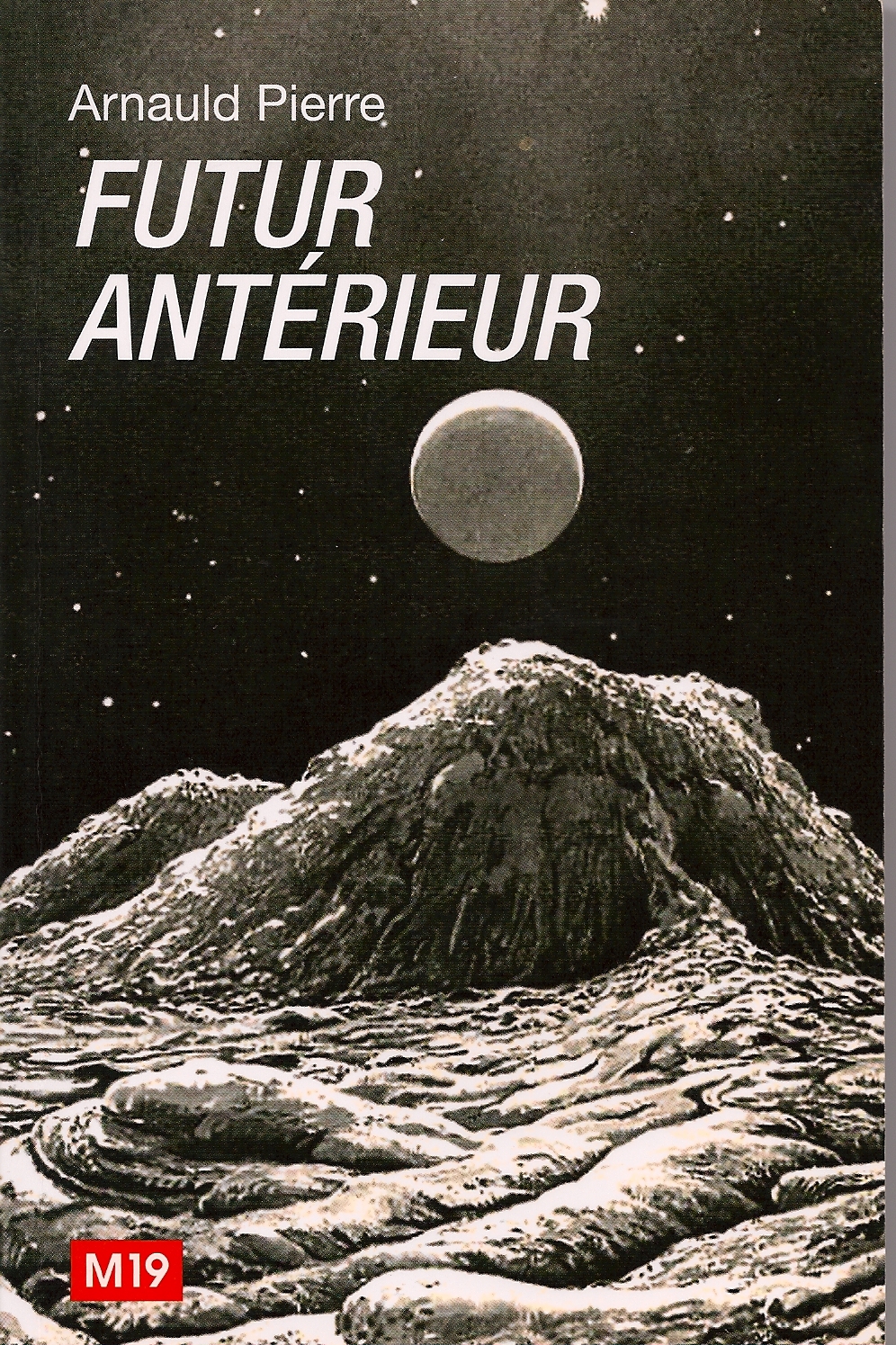
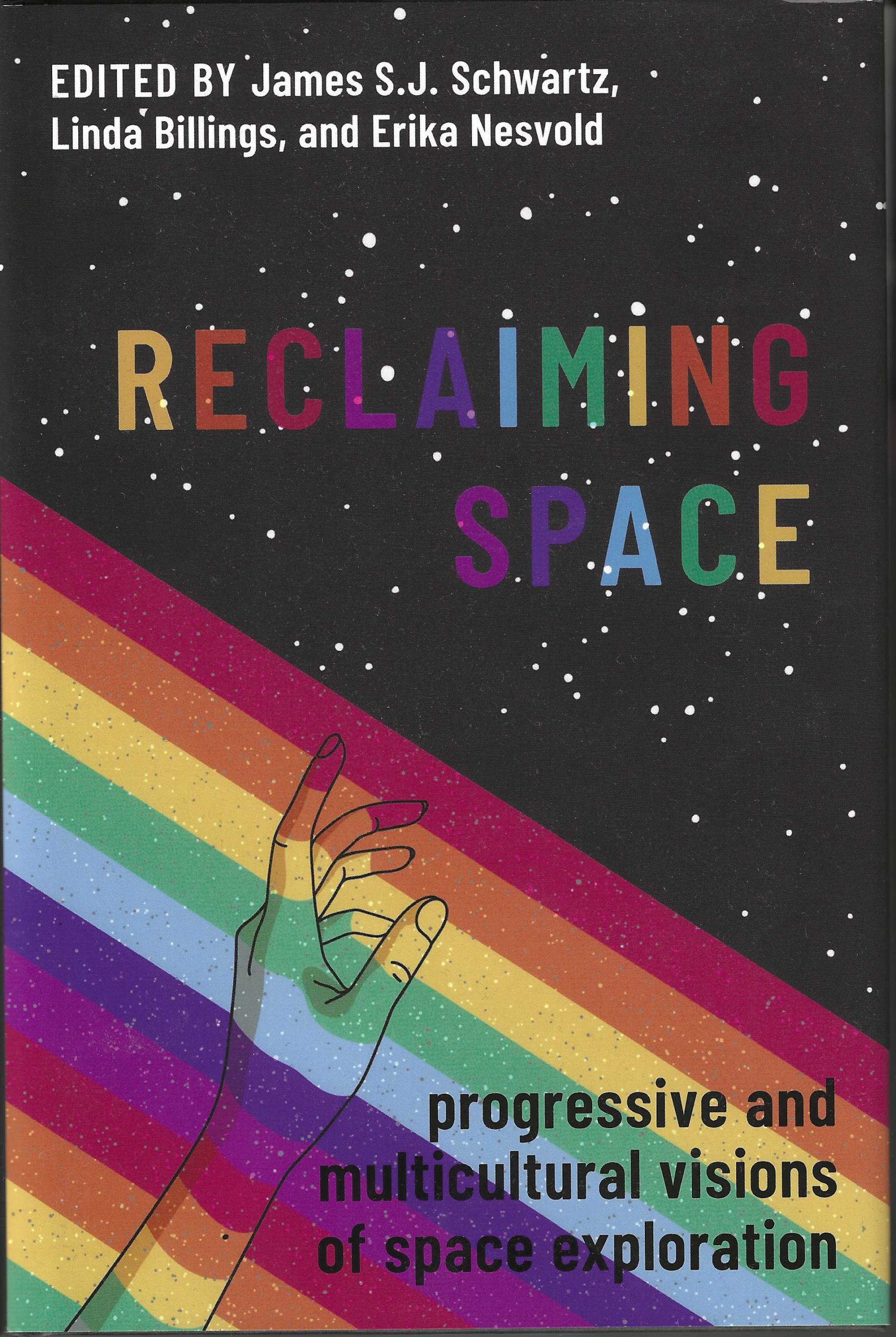
Une sélection d’ouvrages ayant trait à l’art et la culture en relation avec l’espace extra-terrestre // A selection of books and publications dealing with art and culture in relation to outer space.
Arnauld Pierre, Futur antérieur. Art contemporain et rétrocipation, Paris, M19, 2012, 155 pages
Arnauld Pierre, Maternités cosmiques. La recherche des origines, de Kupka à Kubrik, Paris, Hazan, 2010, 154 pages
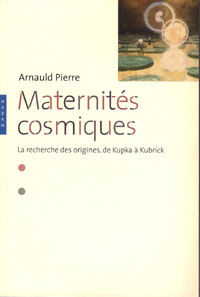
Le Commencement de la vie de Frantisek Kupka (1900) et 2001, A Space Odyssey (1968) de Stanley Kubrik proposent la même image d'un fœtus flottant et irradiant dans la nuit cosmique. Dans cet essai, Arnauld Pierre analyse le mythe de la "maternité cosmique", à la croisée des théories de l'évolution et de l'astronomie moderne. L'"embryon d'or" kupkien et "l'enfant des étoiles" kubrichien en sont les deux représentations emblématiques confrontées avec celles d'autres artistes comme Philipp Otto Runge, Enrico Prampolini, Casimir Malevitch, Barnett Newman mais également à des images issues de la culture scientifique comme de l'imagerie populaire, de la gravure du 19e siècle au cinéma.
Arnauld Pierre (Dir.), Cosmos. En busca de los orìgenes. De Kupka a Kubrik, TEA Tenerife Espacio de las Artes, 2008, 483 pages
Catalogue of the exhibition curated by Arnauld Pierre at the TEA (31 0ctober 2008 ) 31 January 2009).
Essais in Spanish and French by Arnauld Pierre, Yann Beauvais, Isidro Hernández-Gutiérrez, Barthélémy Jobert, Cindy Keefer, Giovanni Lista, Guitemie Maldonado, Domitille d'Orgeval, Myriam de Palma, Pascal Rousseau.
Arnould Jacques, La seconde chance d’Icare. Pour une éthique de l’Espace, Les Editions du Cerf, Paris, 2001, 230 p., ISBN 2-204-06864-0
Jacques Arnould est prêtre dominicain, ingénieur agronome et docteur en histoire des sciences et en théologie. Actuellement il est chargé de mission au sein du CNES (Centre national d'études spatiales) pour réfléchir sur la dimension éthique, sociale et culturelle des activités spatiales. Sa recherche sur l'Espace, dont La seconde chance d'Icare résume en quelque sorte le fruit de son expérience actuelle au sein du CNES, se situe dans la continuité de ses travaux précédents dont le fil rouge s'articulait autour de la question de l'évolution humaine qu'il avait le mérite d'aborder d'un point de vue à la fois scientifique, historique et théologique.
La seconde chance d'Icare répond d'abord à un besoin d'information primaire. Les programmes spatiaux se sont fait en effet jusqu'à présent dans l'ignorance des questions philosophiques et de la société en général. Publié avec le concours du CNES, un tel ouvrage doit aussi être considéré comme s'insérant dans la nouvelle stratégie de communication des agences spatiales. Il vise essentiellement, par une publication destinée au public, à démocratiser les questions relevant de l'Espace et à justifier la raison d'être des agences spatiales.
_
Dans son analyse, l'auteur accorde une place de choix (c'est le chapitre le plus long) aux différents ressorts - mythiques, logiques (guerre et connaissances) et pratiques (l'espace utile) - de l'entreprise spatiale. Arnould réinterprète le mythe d'Icare et en fait moins un récit moralisateur, qui mettrait en garde l'orgueil humain, qu'un récit réaliste, qui répond à un besoin de fuite de l'homme. Aujourd'hui ce mythe serait particulièrement d'actualité alors qu'un nombre croissant de personnes (dont ceux qui défendent la "préférence spatiale") voient dans l'Espace un moyen de remédier aux différentes crises sur notre Terre.
Puis l'auteur résume les grands chapitres du questionnement éthique que soulève l'Espace, à savoir d'abord la pollution avec la question des débris spatiaux ; et la question de la gestion du risque de l'entreprise aérospatiale apparue avec l'explosion de Challenger. Ensuite il aborde le droit et la question de la définition et de l'Espace et de son statut de patrimoine mondial. Le développement de l'activité des entreprises dans l'Espace pose la question du type de gestion de l'Espace, capitaliste certes, mais avec quels aménagements ? Arnould soulève aussi la question de la responsabilité de l'Espace dans le développement de la mondialisation via les images satellites, et les développements des techniques de communication ; ainsi que son corollaire qu'est la surveillance électronique planétaire. Enfin l'auteur rappelle les débats que soulève l'astrobiologie, à savoir la gestion du risque de la contamination planétaire et les problèmes éthiques soulevés par le terraforming. Finalement il aborde la place de l'homme lui-même et de son droit moral à conquérir et explorer l'Espace.
L'auteur ne souhaite répondre à toutes les questions qu'il soulève dans ces chapitres et préfère préciser le débat. Il rappelle deux grands principes juridiques et moraux qui pourraient guider l'entreprise spatiale aujourd'hui, c'est-à-dire le principe de responsabilité (Hans Jonas), et le principe de précaution, plus récent et actuellement validé dans la communauté juridique. Ces principes, selon l'auteur, ne doivent pas immobiliser l'entreprise spatiale mais la continuer dans une prise de conscience claire des risques, acceptés par tous démocratiquement.
Ce questionnement éthique s'inscrit pour Arnould dans la continuité du questionnement humaniste qui vise selon lui essentiellement à "dilater" l'homme à son monde et à "concentrer" le monde en lui. L'humanisme serait alors aujourd'hui un "humanisme spatial", puisque l'humanité "vit" de nos jours l'Espace.
_
Il n'existe pas à ce jour véritablement de synthèse sur toutes les questions éthiques que soulève l'Espace, et qui soit accessible au public. Là réside certainement un apport important de cet ouvrage.
Il aurait été intéressant, puisque l'auteur rappelle lui-même la dimension philosophique du questionnement éthique, d'avoir plus de rappels et détails sur la question de l'Espace dans la philosophie contemporaine, en commençant par les classiques tels que Hannah Arendt ou Heidegger par exemple.
La redéfinition par l'auteur de l'humanisme à partir du "spatial" , poursuivie ailleurs autour de "l'humanisme astronautique" d'Arthur Woods par exemple, ne va cependant pas sans poser problème aujourd'hui. D'abord pourquoi l'humanisme se redéfinirait-il par rapport à la question de l'Espace ? En effet, en quoi le questionnement éthique soulevé par l'Espace est-il différent de celui soulevé par la science et les technologies en général ? Or, - et cela est une deuxième objection à "l'humanisme spatial" - pour des penseurs, tels que Michel Serres, les sciences et technologies d'aujourd'hui remettent en cause l'humanisme lui-même.
Compte-rendu par Julien Knebusch
5 décembre 2001
julien.knebusch@free.fr
Bakke Monika (Ed.), Going Aerial. Air, art, architecture, Jan van Eyck Academie, Maastricht, 2006
Bringing together the organic and non-organic, this book offers an original account of the most innovative technologically, politically and socially aware air-using strategies that have been recently developed by artists and architects in the form of machines, robots, nomadic inflatables, bubbles, ambiances, and atmospheres. Among its authors and articles, an article by Annick Bureaud about art and weightlessness.
Burgess Lowry, The Quiet Axis, Editions du Trécarré, Collection Design, Saint-Laurent (Québec), 1987
Collins Martin J. & Kraemer Sylvia K, Space - Discovery and Exploration, Washington, Smithsonian Institution, 1993
Dealing, as its title says, with the space exploration, this book includes many reproductions of artworks.
Comte Pierre, Le rêve dans l'azur, Paris, Arsat, 2003
In this book, French artist Pierre Comte presents his own creation confronted with an overview of space art history since the ancient time.
Dans cet ouvrage, Pierre Comte retrace sa pratique artistique et la recontextualise par rapport à l'histoire de l'art et à l'histoire de l'espace dans l'art.
Dickson Paul, A Dictionnary of the Space Age, Baltimore, The Johns Hopkins University Press, 2009
Haignere Jean-Pierre, Allix Simon, Carnet de bord d'un cosmonaute, Paris, Flammarion, 2006
Heinrich Christoph, Heinzelmann Markus (Eds.), Rückkehr ins All, Ostfildern-Ruit, Hatje Cantz Verlag, 2005
Catalog of the exhibition of the same name organised by the Hamburger Kunsthalle, from September 2005 to February 2006.
Kerrod Robin, NASA, Visions of Space, Capturing the History of NASA, Prion, Multimedia Books, London, 1990
This is a record of the NASA Art Programme, founded in 1962 to recognizethe role of the artist in visualizing the, then, unattainableobjectives of space technology. It offered artists the chanceto participate in space exploration in a unique way. Nowadays, the NASAarchives contain hundreds of paintings ranging from those technically orientedto some which are completely abstract. This volume reproduces a selectionof 120, from this store, depicting contributions spread over nearly threedecades of NASA space involvement.
Kosmos. A Portrait of the Russian Space Age, New York, Princeton Architectural Press, 2001 - Photographies of Adam Bartos ; essay by Svetlana Boym
The American photographer Adam Bartos has visited the different Russian space facilities and venues and met some of the people who have "made" the Soviet Space Age. This fascinating book compiles a series of his photographs, both of people, objects and buildings, from which emerges the atmosphere of the space conquest as seen from the other side of the iron curtain.
Kriesche Richard, ARTSAT, Graz, 1991
La conquête de l'air. Une aventure dans l'art du XXeme siècle. Catalogue de l'exposition, Les Abattoirs, Toulouse, 12 novembre 2002 - 2 février 2003
Catalog of the exhibition that went from Futurist paintings to the present.
L'attraction de l'espace. Au fond de l'inconnu pour trouver du nouveau !, ouvrage collectif, Musée d'art moderne de Saint-Etienne/Silvana Editoriale, Milan, 2009
Catalogue de l'exposition au Musée d'art moderne de Saint-Etienne du 19 septembre 2009 au 10 janvier 2010.
Launius Roger D., Ulrich Bertram, NASA & The Exploration of Space, with a foreword by Senator John Glenn, Stewart, Tabori & Chang, New York, 1998 - With works from the NASA Art Collection
With works from the NASA Art Collection, foreword by Senator John Glenn, Stewart, Tabori & Chang.
L'Espace habité, Paris, Observatoire de l'espace, CNES, catalogue de la manifestation "Le musée imaginaire de l'espace", Paris, 2008
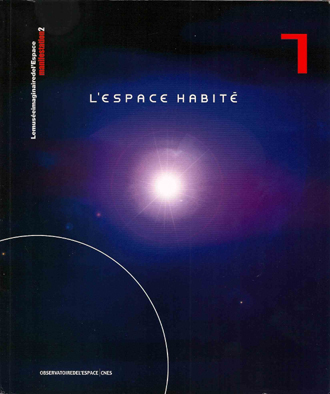
Catalogue of 'The imaginary museum of space" organised by the CNES Observatoire de l'espace, the cultural department of the French Space Agency.
"Le travail de l'espace", JAVA, n°25/26, Paris, 2003
A collaboration between the journal JAVA and the Space Observatory of the CNES (French Space Agency), this special issues builds upon what the space vocabulary and activities have changed in our lives to propose literary and poetry texts. In French.
Mah Sérgio (Ed.), Edgar Martins (Photos), The Rehearsal of Space and The Poetic Impossibility To Manage The Infinite, La Fabrica, Madrid, 2014
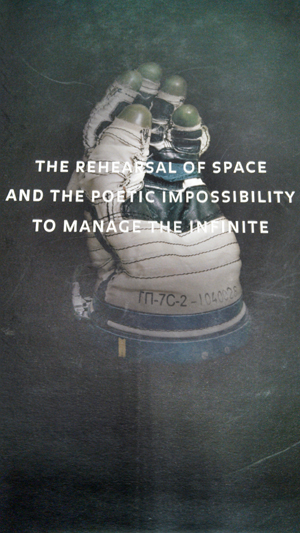
Portuguese born, London based, photographer and artist Edgar Martins (http://www.edgarmartins.com) presents in this book a series of photographs taken at facilities of the European Space Agency over the past few years from Holland, France, Germany, Spain, to Russia, Kazakhstan, and French Guiana .In 2014 The Calouste Gulbenkian Foundation/Modern Art Centre hosted the official launch of "The Rehearsal of Space & The Poetic Impossibility to Manage the Infinite", a project developed in partnership with ESA.
The project has been documented through a number of venues on line, in galleries and in this excellently produced book, which forms the basis for this review. As we celebrate a series of fiftieth anniversaries for key events in the birth of the 'space age", this book is a great example of cultural appropriating and re contextualisation. I have argued that we are now not only in the anthropocene, but also in what will be seen as the start of the age of a 'space age" as distinctive as the stone, bronze, or iron ages. My argument is that today's civilisation depends critically on space data, space systems and space technology to such an extent that if you stopped launching rockets today, our civilisation would regress irreversibly. From disaster relief, to communications, to GPS navigation, we have built space technologies in many of the key infrastuctures that allow our modern societies to function.
The opening essay by Leonor Nazare begins with a discussion of the Mayan civilisation and their astronical calendar achievements. This perpective grounds the book in an interesting question; if four thousand years from now (after the collapse of our current civilisation and the loss of all archives stored on line and in the cloud) how would we interpret the space age from the artifacts and objects (like this book) which might still survive ? How to interpret the space age in the same way as we interpret the stone, bronze and iron ages or the Mayans ?
Among other things, we would discover that access to space facilities was as restricted as in our time access was to the Mayan temples and many of the key technical artifacts have vanished, as have the Mayan ones. She notes " ..in front of the helmet of a SPACE suit and the astronaut's wardrobe; they are containers which are empty but highly indexical". We are provoked to read Edgar Martin's photographs as index entries to the space age; why the choice of particular colours in space facilities (pastel and primary colours - often blue or yellow), the use of highly simplified geometrical shapes (eg the sound baffles in an anechoic chamber), the obsession with cleanliness (clean rooms where the major source of contamination is exfoliation from human skin). We see no humans just as we see no Mayans, just space suits and space habitats and fragments of objects; we would interpret these in terms of the human values they embody.
In the second essay curator Sergio Mah notes that it was in 1967, in the midsts of key events of the birth of the space age, that Michel Foucault developed his concept of 'heteropias' or places that function as counter-sites or realised utopias; these spaces have more layers of meaning or define or trigger relations to other places. Space facilities, with their restricted access, function as heteropias and Martin's photographs 'seem to exist in a gap, in a space-time that is as real as it is virtual and mental" and through their suggestive ambiguity function 'like a space in which somthing is about to happen" connecting back to Martin's term of 'rehearsal spaces'.
In the third essay science writer John Gribbin, describing himself as a child of the space age, talks about the translation of science fiction to science fact in his own lifetime. He notes that less than 100 years since Einstein's development of special and general relativity we now routinely use those calculations to use our smartphones. He describes our current understanding of cosmology and the search for extra-terrestial planets and life. In the essay he develops the idea that simulation has now become an integral component of modern science whether simulating the history of the milky way galaxy or the training facilities for astronauts. He notes that "by the time an astronaut gets into space, he or she is literally able to find their way around the actual spacecraft blindfold'. And of course many of Martin's photographs document the incredible variety of simulated environments the European Space Agency builds on earth that mimic space conditions, to test and prove technological ideas for space travel and space activities. We can then read the photographs as documents of theatrical performances, again in in reference to rehearsal spaces in Martin's words, that play out the human story in an unknown cosmic environment, in much the same way that Mayan priests enacted their own relations to the cosmos.
In the fourth essay, physicist Joao Seixas (a member of a CERN Large Hadron Collider consortium) writes a fascinating discussion of how scientists manipulate, and bound, concepts of infinity to explore the nature of the world. He states " Most of this has changed over the past 100 years, for we have discovered that in many ways what we have considered infinite was only due to an illusion resulting from our limited knowledge of Nature" leading to ' the beginning of a bounded vision of nature'. He describes how the Michelson-Morley experiments led to Einstein's insight that the velocity of light is not infinite ( and thus velocities are not additive). He explains how within theromodynamics the hard boundary of 'absolute zero' and 'zero point energy" were discovered leading to a temperature scale bounded from below (and that this lower limit was unattainable). In quantum mechanics it was discovered that it is not possible to measure infinitely precisely because of the uncertainty principle. The big bang model tells us that time does not go back infinitely into the past. Through quantum mechanics also we know that the vacuum cannot be infinitely empty and describes the physics of the last fifty years as " the ultimate study of the properties of the vacuum", with the current discoveries of dark energy and dark matter as ultimate puzzles. He argues that we face the same kind of scientific uncertainty as a hundred years ago when relativity and quantum mechanics bounded some infinities in revolutionary ways. he quotes Lord Kelvin who stated " we see the clouds gathering on the horizon but we still have still have no idea which storm they bring'. Seixas argues that 'infinity is in fact the one and only motivation for discovery'.
Seixas interprets Martin's photographs as 'bearing witness to the landmarks we leave on the road to the infinite'. Edgar Martin's project is subtitled "The Poetic Impossibility to Manage the Infinite" and forces the question whether there are limits to the extra-terrestial environments that humans can inhabit. Maybe four thousand years from now, these photographs will be interpreted as documentation of human exploration of the limits of human colonisation of space. Just as Mayan civilisation was finely tuned to their own environmental and social context, so human life is finely tuned to the near earth environment from our genetic history and social nature. The endless debate between human and robotic colonisation of space may take several centuries to explore, but still I am convinced that we are irreversibly a 'space culture' and that our civilisation is now a space age vitally dependent on space data, space systems and space technology. As argued by proponents of the 'Space Option" (http://www.leoalmanac.org/the-space-option-by-arthur-woods), space activities are essential to a sustainable human civilisation on earth. But there may be limits to how far off the surface of the earth humans can sustainably live. Edgar Martin's project "The rehearsal of space and the poetic impossibility to manage the infinite" is a fascinating cultural document on these fundamentally cultural, not scientific or technical, questions.
Reviewed by Roger Malina.
Middendorf Angelika, Treadmills - Looping Space, Revolver, Frankfurt am Main, Archiv für aktuelle Kunst, 2005
Personal catalog on the work of Angelika Middendorf, includes her space art work.
Miller R. & Durant F., Worlds Beyond : The Art of Chesley Bonestell, Donning, 1983
(an album and tribute about the pioneering space artist)
Miller R., The Dream Machines, Krieger, 1993
(an illustrated historyof the spaceship in art, science, and literature)
Noever Peter, Perrin François (Eds), Air Architecture. Yves Klein, Ostfildern-Ruit, Hatje Cantz, 2004
Catalog of the exhibition. In English.
Paglen Trevor, The Last Pictures, Creative Time Books (New York) & University of California Press (Berkeley, Los Angeles, London), 2012
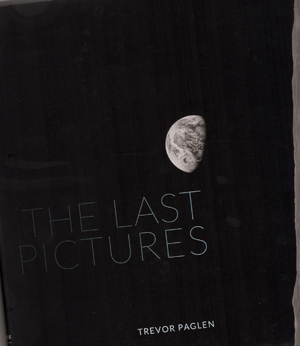
This book documents Trevor Paglen's project of the same name that consisted of selecting one hundred images as a visual record of our contemporary historical moment, etching them on a silicon wafer encapsulated into a gold shell and put aboard the communication satellite EchoStar XVI launched into a geosynchronous orbit in 2012. The Last Pictures, a time capsule, is supposed to be the longer(ever?) lasting cultural objet-artifacts produced by humans.
Painting-Drawing, Memorial Museum of Cosmonautics, Moscow, 1995
Paintings and drawings about space by Russian artists.
Parks Lisa, Cultures In Orbit. Satellites and the televisual, Durham, Duke University Press, 2005
Poole Robert, Earthrise. How Man First Saw the Earth, New Haven, Yale University Press, 2008
Phase Zéro, 96 propositions spatiales, Observatoire de l'espace, CNES, catalogue de la manifestion, "Le musée imaginaire de l'espace", Paris, 2009
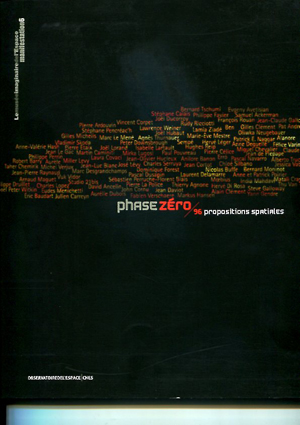
En collaboration avec la galerie Serge Aboukrat.
Catalogue of the 'The imaginary museum of space" organised by the CNES Observatoire de l'espace, the cultural department of the French Space Agency in collaboration with the Serge Aboukrat Gallery.
Includes 96 artistic propositions of uneven quality and interest. Worth browsing.
http://www.cnes-observatoire.net/
Rauschenberg Robert: Prints 1948-1970, Minneapolis, Minneapolis Institute of the Arts, 1970
Catalogue of the exhibition. It includes the reproduction (unfortunatly in black and white only) of the 33 prints from the Stoned Moon series that Rauschenberg created in 1969/1970 when he was invited by NASA within the framework of its art programme.
Catalogue de l'exposition. Il inclut la reproduction (malheureusement en noir et blanc) des 33 lithographies de la série Stoned Moon que Rauschenberg réalisa en 1969/1970 en tant qu'artiste invité dans le cadre du programme artistique de la NASA.
Science Fiction & Technology Fact, Nordwijk, ESA/ESTEC, 2004
The confrontation of today's science and technology with yesterday dreams of science-fiction.
Soret Jean-Luc et Bureaud Annick (Dir.) Space Art, Anomalie, n°4, Automne 2003
Special issue of the journal Anomalie, and catalogue of the @rt Outsiders Festival. Includes the description of the artworks that have been exhibited, the texts from the two symposia : "Visibility - Legibility of Space Art. Art and Zero Gravity: the experience of parabolic flights" and "The Odysee of Space art". Bilingual French/English
Numéro spécial de la revue Anomalie et catalogue du festival @rt Outsiders. Comprend la présentation des œuvres présentées et les textes des deux colloques : "Visibilité - Lisibilité de l'art spatial. Art et gravité zéro : l'expérience des vols paraboliques" et "L'odysée de l'art spatial". Bilingue français-anglais.
Space is the Place, New York, iCI/Independent Curators International, 2006
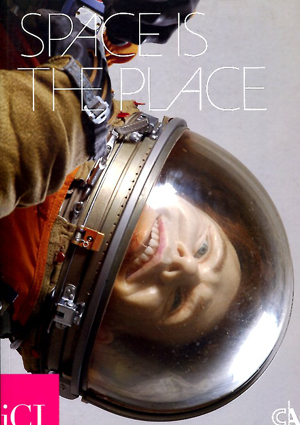
Catalogue of the touring exhibition curated by Alex Baker and Toby Kamps. Includes works by Laurie Anderson, Colette Gaiter, Oleg Kulik, Alexandra Mir, Damian Ortega, Marko Peljhan, Jane & Louise Wilson.
The Memorial Museum of Cosmonautics, Catalogue of the Moscow Museum
Includes reproductions of artworks by Russian artists.
TERRA I 0, Microwave International New Media Arts Festival 2013 Catalogue, 124 p
This year, the Microwave International New Media Arts Festival that took place in November focused on the theme of Outer Space.
This elegant catalogue, in Chinese and English includes essais by Annick Bureaud, Rob La Frenais and Sarah Jane Pell.
The exhibited artworks are documented: Coallision (2013) de Reni & Jogi Hofmüller, The Martian Rose (2007/9) d'Howard Boland et Laura Cinti, Moon Goose Analogue: Lunar Migration Bird Facility (depuis 2011) d'Agnès Meyer-Brandis, Space Maintenance / Lost in Space (2009-2013) de duo We Colonised The Moon (Sue Corke & Hagen Betzwieser), Virtual Synchronicity (2012) de Tobias Klein.
Also, but more briefly documented are the video and screening programmes as well as the symposium.
Topham Sean, Where's My Space Age? The rise and fall of futuristic design, Munich, Prestel, 2003
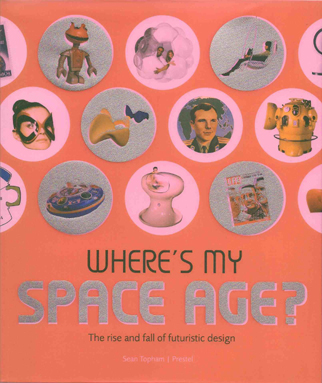
This book examines how the space conquest of the '60s and the dream of a space-age future invaded every aspect of design and everyday life, from fashion and furniture to architecture, from toys and comics to sweet wrapers, to disappear as suddenly as it has aroused. It considers how it is revisited by contemporary designers and artists.
This book is richly illustrated and includes examples both from high and popular cultures, from the United States and the former Soviet Union, as well as from Europe and Japan.
Triscott Nicola, La Frenais Rob (Eds.), ZeroGravity. A Cultural User's Guide, London, The Arts Catalyst, 2005
This book covers the different artists and projects involving micro-gravity and space art supported by the Londonian cultural agency Arts Catalyst.
Village Global : Les années 60, Montréal, Musée des Beaux-Arts Montréal/Snoeck, 2003
Catalog of the exhibition. Includes items and texts about space and art. In French.
Zukowsky John (ed.), 2001: Building for Space Travel, Harry N. Abrams Inc and The Art Institute of Chicago, Spring 2001
Catalogue of the exhibition devoted to exploring the relationship between the products actually designed for space flight, and the imaginary visions of such materials in science fiction, films, and television.
An introduction by Ar Institute Architecture curator John Zukowsky illuminates the historical contexts in which space technology and fantasy developed, and is followed by thirteen brief essays addressing topics as diverse as the future of space tourism, the interior design of Skylab, the training of Soviet Cosmonauts, and Norman Rockwell's painitng The Longest Step.
Leonardo/Olats
Observatoire Leonardo des Arts et des Techno-Sciences
À propos / About | Lettre d'information Olats News



Pour toute (re)publication, merci de contacter / For any (re)publication, please contact Annick Bureaud: info@olats.org
Pour toute question concernant le site, merci de contacter / For any issue about the website, please contact: webmaster@olats.org
Design Thierry Fournier
© Association Leonardo 1997-2022